This article needs additional citations for verification .(March 2008) |
Chiaiano is a north-western quarter of Naples, with a population of about 23,000.
This article needs additional citations for verification .(March 2008) |
Chiaiano is a north-western quarter of Naples, with a population of about 23,000.
Chiaiano is a hilly and wooded area that lies between Camaldoli and the Campi Flegrei.
Archaeologically, the area is of interest, displaying remnants of pre-and-non-Roman inhabitants such as the Oscans and Samnites.
Since the earthquake of 1980, it is one of the outlying areas that has undergone extreme urbanization—that is, large tracts of public housing to provide for those left homeless by that event.
In 2008, No Dal Molin protested the opening of a refuse tip in the quarries between Chiaiano and Marano. [1]
It is twinned with Manhattan, the commercial quarter of New York[ citation needed ] and has received the certificate of calmer quarter of the city.
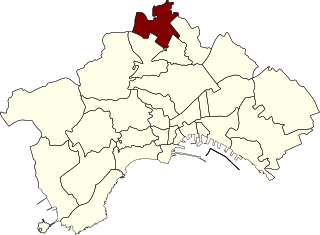
Scampia is a modern suburb in the far north of Naples, whose population is about 80,000. To its south are the suburbs of Piscinola, Miano and Secondigliano.
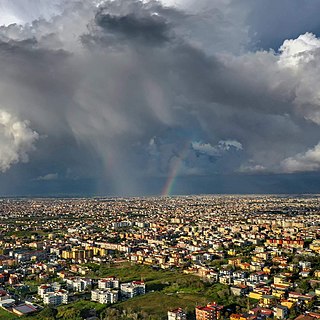
Marano di Napoli is a comune (municipality) in the Metropolitan City of Naples in the Italian region of Campania, located about 9 kilometres northwest of Naples. Partly located on the Camaldoli hill, it is one of the most populous municipalities in the metropolitan city.
Running beneath the Italian city of Naples and the surrounding area is an underground geothermal zone and several tunnels dug during the ages. This geothermal area is present generally from Mount Vesuvius beneath a wide area including Pompei, Herculaneum, and from the volcanic area of Campi Flegrei beneath Naples and over to Pozzuoli and the coastal Baia area. Mining and various infrastructure projects during several millennia have formed extensive caves and underground structures in the zone.
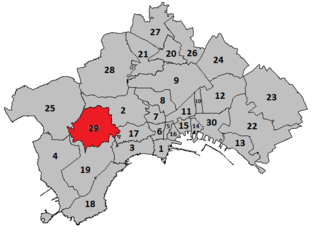
Soccavo is a western quarter of Naples, with a population of about 45,000.

Pendino is one of the 30 quartieri of Naples, southern Italy.

Poggioreale is a neighbourhood of Naples, southern Italy. It is at the extreme east end of the downtown Naples and includes the central train station, Centro Direzionale, Poggioreale prison, and the industrial area to the east.

Piscinola, or Piscinola-Marianella, is a northern suburb of Naples, Italy, with a population of ca. 20,000. It is bordered to the north by the Scampia district, north-west with the municipality of Mugnano of Naples, on the west by the Chiaiano district, to the south with the district of San Carlo all'Arena and east with the district Miano.
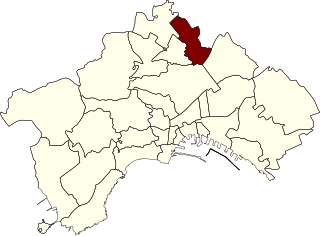
Secondigliano is a modern suburb in the north of Naples, Campania, Italy. It is part of the 7th municipality of Naples, along with the suburbs of Miano and San Pietro a Patierno.

The Four Days of Naples was an uprising in Naples, Italy, against Nazi German occupation forces from September 27 to September 30, 1943, immediately prior to the arrival of Allied forces in Naples on October 1 during World War II.
The Lo Russo clan was a Neapolitan Camorra clan operating on its territory within the city of Naples, concentrated specifically in the area of Miano, whose control extended throughout numerous neighborhoods in the north of the city for more than three decades. Since the fall of all the Lo Russo brothers, and the numerous arrests of most of its affiliates, the organization is considered overthrown.
The Scissionisti di Secondigliano or Amato-Pagano clan is a Camorra clan from the Secondigliano district of Naples, headed by Raffaele Amato and Cesare Pagano. They are also known as "Spagnoli" (Spaniards) because of their strong presence in Spain, particularly in Costa del Sol and Barcelona.
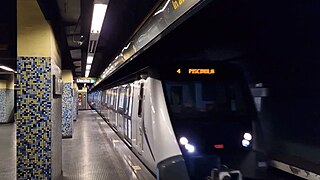
Line 1 is a Naples Metro line that runs from Piscinola Scampia in suburban north-west Naples to Garibaldi in southeast Naples. Printed in yellow on the map, it serves 19 stations, 16 of which are underground, over 18.8 kilometres (11.7 mi). It is operated by ANM. The line has been renamed Metrò dell'Arte reflecting the presence of contemporary art works installed in some of its stations.

The "Naples waste management crisis" is a series of events surrounding the lack of waste collection and illegal toxic waste dumping in and around the Province of Naples, Campania, Italy, beginning in the 1980s. In 1994, Campania formally declared a state of emergency, ending in 2008, however, the crisis has had negative effects on the environment and on human health, specifically in an area that became known as the triangle of death. Due to the burning of accumulated toxic wastes in overfilled landfills and the streets, Naples's surrounding areas became known as the "Land of pyres". The crisis is largely attributed to government failure to efficiently waste manage, as well as the illegal waste disposal by the Camorra criminal organization.
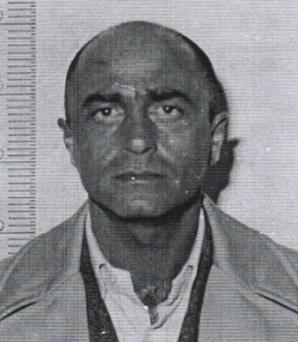
Luigi Esposito, also known as Celeste ("Sky-blue"), is an Italian criminal and a member of the Neapolitan Camorra.

The triangle of death is an area approximately 25 km northeast of the city of Naples in the Province of Naples, Campania, Italy, that comprises the comuni of Acerra, Nola and Marigliano. This area contains the largest illegal waste dump in Europe due to a waste management crisis in the 1990s and 2000s.

The Tomb of Cardinal Rainaldo Brancacci is a sculptural work in the church of Sant'Angelo a Nilo in Naples, southern Italy, executed by Donatello and Michelozzo around 1426-1428. Built in marble, partly gilt and polychrome, it has a height of 11.60 meters and a width of 4.60.

The historic center, or Centro Storico, of Naples, Italy represents the historic nucleus of the city, spanning 27 centuries.
Between 2020 and 2022 hundreds of people from all over Italy protested against COVID-19 regulations. The protests ended with the abolition of the majority of restrictions in June 2022. After the 2022 Italian general election in September, the remaining restrictions were removed completely by the Meloni Cabinet after Giorgia Meloni began serving as Prime Minister in October 2022.

Frullone is a station on line 1 of the Naples Metro public transport service, Naples, Italy. It was opened on 19 July 1995 as part of the section between Colli Aminei and Piscinola. The station is located between Colli Aminei and Chiaiano.
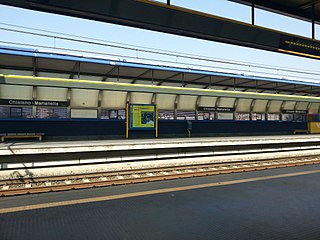
Chiaiano Marianella is a station on line 1 of the Naples Metro. It was opened on 19 July 1995 as part of the section between Colli Aminei and Piscinola. The station is located between Frullone and Piscinola.
The protests against the opening of a refuse tip in the quarries located between the Chiaiano district in Naples and the town of Marano started at the beginning of 2008. These, together with other similar protests, were set in the context of the so-called emergenza rifiuti ('trash emergency') in Campania that broke out towards the end of 2007, when the city streets were filled with garbage because of the saturation of the working refuse tips .... The No Dal Molin participated in the demonstration of 1 June in Chiaiano (Naples), in solidarity with the anti-dump protest (R 2 June 2008).